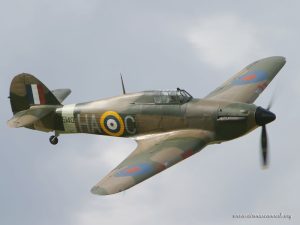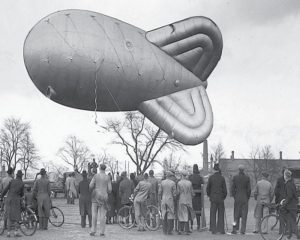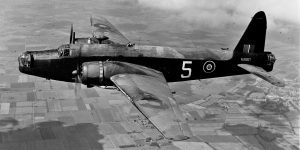War Years
A large flat site, just outside London and well situated for communication with other allied industries was required for an aircraft factory (Hawker Aircraft). Parlaunt Farm, on the west side of Sutton Lane, bounding Richings Park, was an ideal choice and so it disappeared.

A range of fighter aircraft were made and tested here including the Hurricane, Typhoon, Tempest and Fury. After the war Hawker-Siddeley sold off the factory to Fords and the land for a new housing development and a new route from Sutton Lane to Langley, Parlaunt Road, was created. However, they retained the large parcel of land on the corner of North Park/Market Lane.
Home Wood was the site of a small unit of soldiers in army huts (REME?) who also occupied Thorney House. Their role was to service the smoke screens which protected the aircraft factory.
The screens were set up right round the outside of Hawkers and were intended to create a fog drifting across the potential target so as to blur its precise outline and ensure that any bombs dropped would fall around rather than on the target. Not good news for Richings Park! The screens consisted of bins about half the size of dustbins placed 2×2 at frequent intervals with chimneys topped by deflector plates and burnt crude oil.
The resulting blue stench was all pervasive; it seeped in round doors and windows and rooms were full of smog. The air was sickening to breathe. In Richings Park the screen went down Wellesley Avenue and along other roads. Luckily the wind mostly blew from the south west taking the smoke away from many areas.
A ring of barrage balloons was also employed to keep enemy aircraft sufficiently high to make precision bombing difficult. One was located on the Sports Club ground. Whether these protections worked or whether the assembly plant was of less importance that the plant which made the component parts in Coventry is a matter for debate, but Hawker’s was only attacked twice each time by a single aircraft.
Barrage balloons had a propensity to break loose. One drifted across the fields towards the Ridings and the late Bill Staig (at No 12) recalled the steel hawser ripping off the corner of the thatched roof of No 11.

Despite these defences in and around the airfield which would have affected the test pilots as well as enemy aircraft, it seems that only 2 planes crashed in the vicinity of Richings Park. A Spitfire came in over Wellesley Avenue and managed to hop over to Syke Ings coming down in the road and front garden of No 51. The pilot was killed but other crew survived!

A Wellington bomber came down in the copse just beyond the end of the Poynings in 1940 and all the surrounding houses were evacuated to the Tower Arms until it was established that it was not an enemy plane and the pilot had bailed out.
Another Wellington bomber from 115 Squadron on ferry duty en route to Malta struck a barrage cable at one in the morning on 30th October 1940 and came down on the Common at West Drayton some hundred yards or so west of the Wraysbury river, just south of Mercer’s Mill. Sadly all the crew were killed.
The drone of flight after flight of German bombers on their way to the industrial areas of Coventry and Sheffield could be frequently heard in Richings Park. Then the heavy anti-aircraft battery at Chandlers Hill near the Black Horse pub opened up and made the doors rattle, the ceilings shake and cracked roof tiles from falling shrapnel.
A great number of bombs were dropped in the Iver area by the planes returning to Germany after these raids. One night a land mine (designed to cause maximum surface blast damage) fell near the Mansion and landed in the ditch of the ha-ha which threw the blast up, so that although the house was seriously damaged the nearby properties in North Park and Old Slade Lane escaped with only a lot of broken windows.
A delayed action, high explosive bomb also fell in Wellesley Avenue between Nos 44 and 46. Mr Hudson of No 36 had been in his shed at the time and the bomb fell just a few feet away from him into soft earth. Fortunately he was able to get away before it exploded and destroyed both houses. The whole street up to the junction with Somerset Way was evacuated for a while.
The air-raid siren was heard several times a day during the periods of the ‘blitzkrieg’ and was more or less continuous during the sunny September days of the Battle of Britain. During the Blitz, residents stood by the Old Post Office and watched the glow of the fires in the night sky of London 15 miles away.
Latymer school was billeted in Richings Park at the beginning of the war, and there was also the workforce of Hawker’s to be housed. Since everyone had identity cards the size of family in relation to the house was known.
The Billeting Officer took up the spare rooms and quartered war workers in many of the houses of Richings Park. Some residents found it difficult but most made the best of it as their lodgers had no choice either, being directed labour.